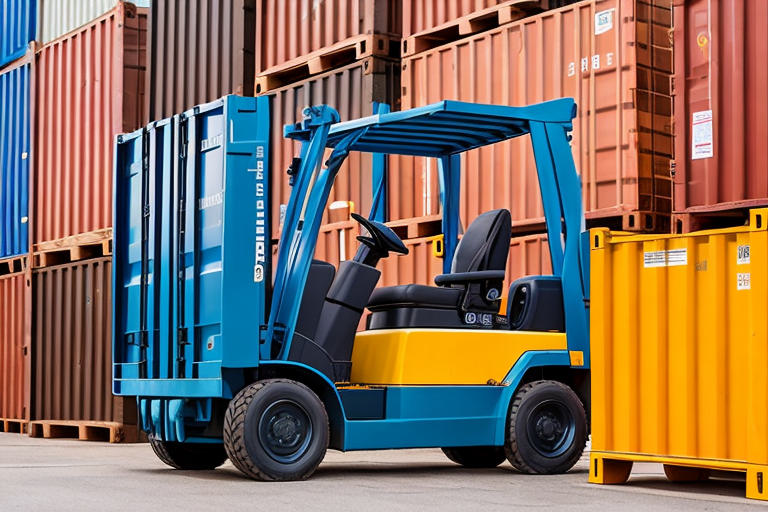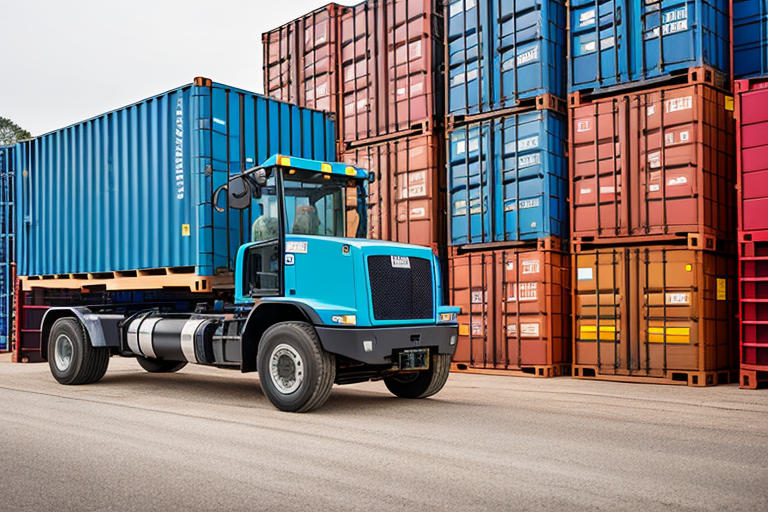Introduction
At Disk.com, we understand the importance of selecting the right freight containers when it comes to B2B freight. In this blog post, we will discuss the differences between floor loading and pallet loading containers, as well as the benefits and drawbacks of each. We will also provide our recommendation on which type of container is best for B2B freight.

Benefits of Floor Loading Containers
Floor loading containers offer a variety of benefits for businesses that ship goods through B2B freight. These containers provide increased cargo capacity, reduced shipping costs, and improved safety.
Increased Cargo Capacity
Floor loading containers are ideal for businesses that need to transport a large number of items. Unlike pallet loading containers, which require the items to be loaded onto pallets before being placed in the container, floor loading containers can accommodate items without any additional packaging or preparation. This increases the amount of cargo that can fit in the container, allowing businesses to save money on shipping costs by maximizing the use of space.
Reduced Shipping Costs
The increased cargo capacity offered by floor loading containers also helps to reduce shipping costs. By packing more items into the container, businesses can reduce their overall shipping costs since they do not need to pay for additional containers to accommodate their goods. Additionally, because the items do not need to be loaded onto pallets before being placed in the container, businesses can save money on labor costs associated with preparing the goods for shipment.
Improved Safety
Floor loading containers also offer improved safety compared to pallet loading containers. Since the items are not placed onto pallets before being loaded into the container, there is less risk of them shifting during transport and causing damage to other cargo in the container. Additionally, because there is no need for additional packaging or preparation of the items before they are loaded into the container, there is less risk of damage due to improper handling or packaging.
Main Idea: Floor loading containers offer increased cargo capacity, reduced shipping costs, and improved safety. Key Findings: Maximizes space, reduces labor costs, and minimizes risk of damage.
Benefits of Pallet Loading Containers
The benefits of pallet loading containers for B2B freight are numerous. One of the most significant advantages is the increased speed of loading and unloading. Pallet loading containers are designed to make the process easier and faster, as the goods can be loaded onto pallets or skids that can then be quickly loaded into the container. This reduces the amount of time it takes to load and unload cargo, which can improve efficiency and reduce costs.
Another benefit of pallet loading containers is that they are much easier to stack goods in than floor loading containers. Goods can be stacked on top of each other more easily and securely, reducing the risk of damage during transport. Additionally, pallet loading containers offer improved product security, as goods are more securely packed and less likely to move around during transport.
Finally, pallet loading containers can help reduce labor costs associated with loading and unloading cargo, as fewer workers are needed to move goods into and out of the container. This can help reduce costs associated with labor, improving profitability for businesses that rely on B2B freight services.
Faster loading and unloading times
Pallet loading containers allow for faster loading and unloading times compared to floor loading containers, as goods can be quickly loaded onto pallets or skids that can then be loaded into the container. This reduces the amount of time it takes to load and unload cargo, which can improve efficiency and reduce costs associated with labor.
Easier to stack goods in the container
Pallet loading containers also make it much easier to stack goods in the container than floor loading containers. Goods can be stacked on top of each other more easily and securely, reducing the risk of damage during transport. Additionally, this type of container offers improved product security, as goods are more securely packed and less likely to move around during transport.
Improved product security
Finally, pallet loading containers provide improved product security compared to floor loading containers due to their ability to securely pack goods in a way that prevents them from moving around during transport. This helps reduce the risk of damage or loss due to shifting or other factors during transport, providing peace of mind for businesses relying on B2B freight services.
Main Idea: Pallet loading containers offer faster loading and unloading times, easier stacking of goods, and improved product security compared to floor loading containers.
Drawbacks of Floor Loading Containers
When it comes to floor loading containers, there are some drawbacks that should be taken into consideration when deciding which type of container is best for B2B freight.
Limited Cargo Capacity
One of the main drawbacks of floor loading containers is their limited cargo capacity. Because the goods must be loaded directly onto the floor of the container, there is less space for goods than with pallet loading containers. This can lead to higher shipping costs as more containers may be needed to transport the same amount of goods.
Increased Risk of Damage to Goods
Another drawback of floor loading containers is the increased risk of damage to goods during transport. Without pallets or other forms of support, goods can shift and move around in the container during transport, leading to potential damage. This is especially true for heavier items such as machinery or industrial equipment that require extra support during transit.
More Labor Intensive Loading Process
Finally, floor loading containers require a more labor intensive loading process. Without pallets, workers must manually load each item onto the container one at a time, which can be time consuming and costly. Additionally, this method requires workers to lift and carry heavier items, which can lead to potential safety risks.
Drawbacks of Pallet Loading Containers
Pallet loading containers are a great way to transport goods for B2B freight, but they do come with some drawbacks. The biggest drawback is the higher shipping costs associated with pallet loading containers. This is because the container needs to be able to support the weight of the goods, and pallet loading containers are typically heavier than floor loading containers. Additionally, there is always a risk of goods shifting during transport, which can lead to damage or lost goods. Finally, pallet loading containers take longer to load and unload due to the extra time it takes to arrange the goods on the pallets.
These drawbacks should be taken into consideration when deciding which type of container is best for B2B freight. Floor loading containers have their own drawbacks, such as limited cargo capacity and increased risk of damage to goods, but they may still be the best option depending on the situation. Ultimately, it’s important to consider all factors before making a decision on which type of container is right for your business.
Conclusion
When it comes to B2B freight, floor loading and pallet loading containers both have their advantages and disadvantages. Floor loading containers offer increased cargo capacity and reduced shipping costs, but come with the downside of limited capacity and a more labor-intensive loading process. Pallet loading containers, on the other hand, offer faster loading and unloading times, as well as improved product security, but can be more expensive to ship and may result in goods shifting during transport.
Recommendation
At Disk.com, we recommend considering the specific needs of your business when selecting which type of container is best for your B2B freight needs. With our concierge service and custom tailored fulfillment plans, we can help you decide which option is best for you.


